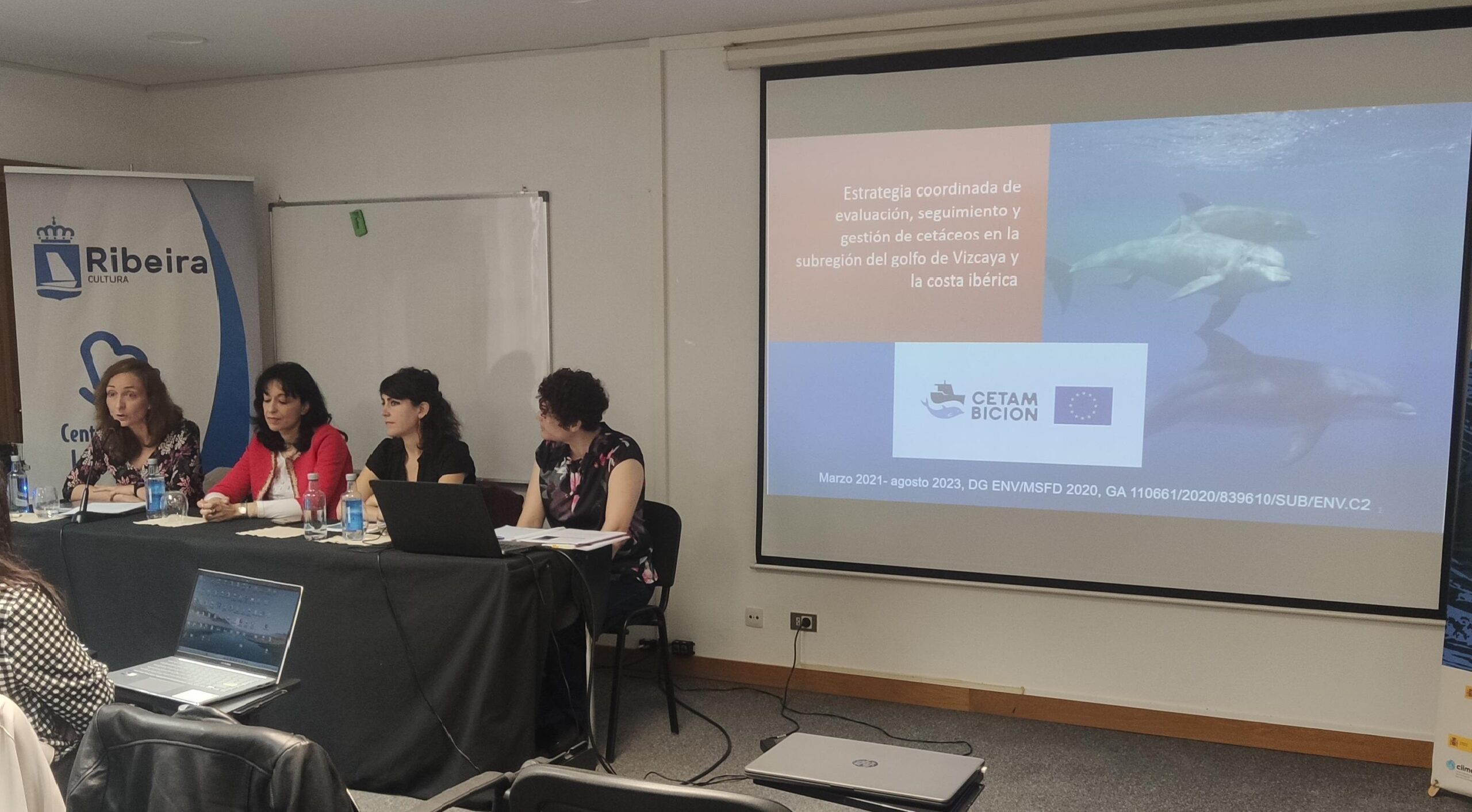We have held two workshops aimed at different sectors linked to fishing activity and marine conservation with the objective of sharing the results achieved in the CetAMBICion project and promoting the participation of these sectors to propose possible measures to mitigate the accidental capture of cetaceans in the Bay of Biscay. We have held two... Read more »
We have held two workshops aimed at different sectors linked to fishing activity and marine conservation with the objective of sharing the results achieved in the CetAMBICion project and promoting the participation of these sectors to propose possible measures to mitigate the accidental capture of cetaceans in the Bay of Biscay.
We have held two workshops aimed at different sectors related to fishing activity and marine conservation with the objective of sharing the results achieved in the CetAMBICion project and promoting the participation of these sectors to propose possible measures to mitigate the accidental capture of cetaceans in the Bay of Biscay and the Iberian Coast.
Firstly, in both workshops, the current regulatory framework and regulations related to the reduction of accidental catches during fishing activity were presented. This includes the obligations derived from the Framework Directive on Marine Strategies and Order APA/1200/2020, which establishes measures for mitigation and improvement of scientific knowledge, as well as the Spanish National Plan for the reduction of accidental catches in fishing activity.
The monitoring programs carried out within the project and the results achieved regarding the abundance and distribution of cetacean populations, as well as the areas at risk of interaction with fishing activity due to the high presence of these species, were also presented.
Furthermore, emphasis has been placed on evaluating strategies to reduce the incidental capture of cetaceans, and technical fishing measures have been presented to mitigate these captures. On one hand, the different devices currently available and their effectiveness based on fishing gear types have been reviewed, and tests have been conducted to assess the feasibility and effectiveness of cetacean exclusion devices as a pilot project being carried out by the Spanish Institute of Oceanography (IEO-CSIC). The results of evaluating the effectiveness of changing the vessel’s location based on shared cetacean sightings among skippers have also been shared. This is facilitated by an app and allows for avoiding large dolphin herds that may pose a risk during fishing activities, known as the Rule of Movement, particularly promoted by French partners. Finally, all the recommendations for best practices and options to be considered in order to reduce cetacean mortality in the waters of the Bay of Biscay and the Iberian Coast were presented.
The first workshop, held in Vigo (Spain), mainly involved public administrations, scientific institutions, and NGOs. The second workshop, which took place in Ribeira (Spain), focused on the fishing sector and involved the participation of fishing associations, federations, fishing producer organizations, cooperatives, shipowner associations, longliners, and trawlers, as well as port authorities. This second session focused on best practices and finding shared solutions with the sector.
The workshops were co-organized by the Biodiversity Foundation, the Ministry for the Ecological Transition and the Demographic Challenge (MITECO)’s Secretariat of State for the Environment, the Ministry of Agriculture, Fisheries and Food (MAPA)’s General Secretariat of Fisheries, the Marine Research Institute (IIM-CSIC), and the Spanish Institute of Oceanography (IEO-CSIC). They involved the participation of 53 people from 35 entities.
PROJECT CETAMBICION
This workshop is part of the CetAMBICion project, “Coordinated Strategy for the Assessment, Monitoring, and Management of Cetaceans in the Bay of Biscay and the Iberian Coast Subregion,” which aims to contribute to reducing cetacean mortality due to accidental captures in fishing nets in collaboration with the fishing sector.
The CetAMBICion project, coordinated by the Institute of Marine Research (IIM-CSIC) and involving 15 partners from Spain, France and Portugal, aims to strengthen collaboration and scientific work between the three countries to estimate and reduce cetacean bycatch in the Bay of Biscay and Iberian Coast sub-region, in close collaboration with the fishing sector.
The initiative is part of the European Commission’s DG ENV/MSFD 2020 (Marine Strategy Framework Directive) call and the objectives are also aligned with the Habitats Directive and the Common Fisheries Policy.


